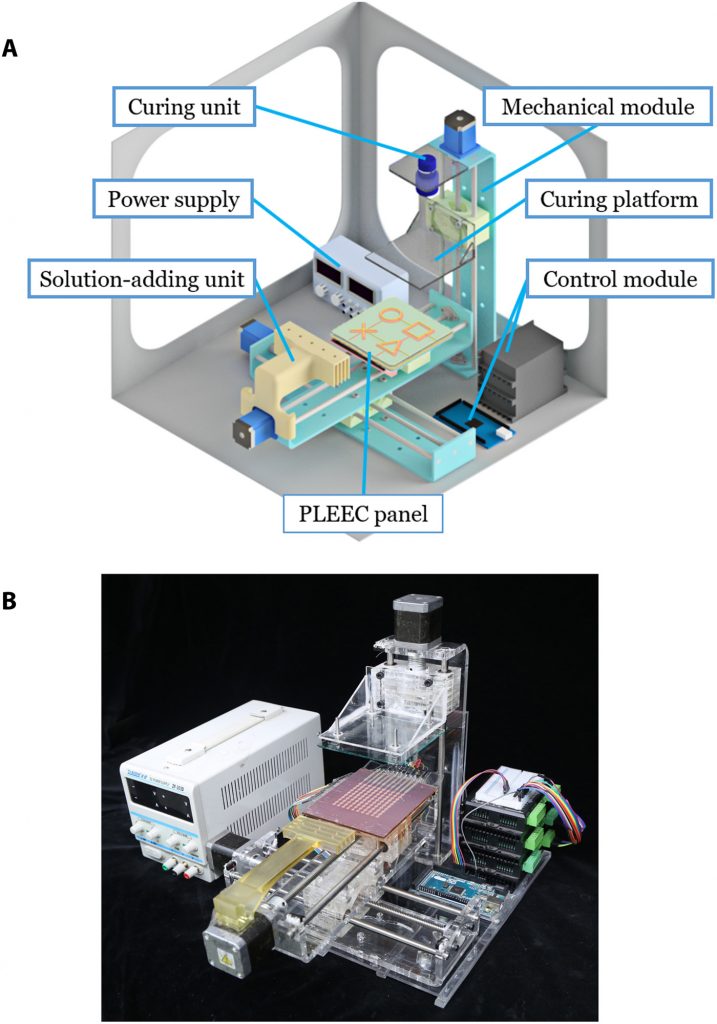 In the recently published ‘Hydrogel 3D printing with the capacitor edge effect,’ authors Jikun Wang, Tongqing Lu, Meng Yang, Danqi Sun, Yukun Xia and Tiejun Wang further explore the use of hydrogels with progressive fabrication techniques, and outline their new method for overcoming current challenges.
In the recently published ‘Hydrogel 3D printing with the capacitor edge effect,’ authors Jikun Wang, Tongqing Lu, Meng Yang, Danqi Sun, Yukun Xia and Tiejun Wang further explore the use of hydrogels with progressive fabrication techniques, and outline their new method for overcoming current challenges.
While hydrogels are often central to bioprinting today, these structures are also used in many other applications like manufacturing diapers, contact lenses, and drug delivery. The medical field is of course benefiting from their continued use, however, in tissue engineering. Hydrogels have also branched off into numerous different categories such as functional, responsive, double-network, tough, along with those included in soft sensors, actuators, and ionic devices.
The authors put the issue at hand very clearly here: as hydrogels become more advanced, so should the techniques being used to create them. In this study, they detail a new way to pattern liquids with the capacitor edge effect, offering a method they expect to be applied for creating comprehensive hydrogel 3D printing systems. They go into detail regarding techniques for rapid prototyping of:
- Hydrogel scaffolds
- Hydrogel composites that are temperature-sensitive
- Ionic high-integrity hydrogel display device
In using the capacitor edge effect (PLEEC), hydrogels can be created with many different properties, and cross-linking is possible too with a variety of mechanisms and materials.
“The asymmetric design of the capacitor makes it possible to build a real 3D object rather than merely 2D patterns within two electrodes,” state the researchers. “We build a 3D printing system based on the new method and demonstrate a series of printed hydrogel structures including a hydrogel scaffold, a hydrogel composite, and hydrogel ionic devices.”
Essentially, capacitors store electrical charges. Here, the authors study and compare both symmetric and asymmetric capacitors—with the end goal of producing the asymmetric forms to both ‘trap and control liquids in an open space.’ Their 3D printing system for hydrogels is made up of seven parts:
- Mechanical module
- PLEEC panel
- Solution-adding unit
- Curing platform
- Curing unit
- Power supply
- Control module
The researchers use an Arduino Mega 2560 R3 to control the system, with three 42-stepper motors controlled by Leadshine DM542 to actuate the three sliding rails. They also use a high-voltage power supply (Trek 610E), applied at 3000 V at 1 kHz.
Polymerization can be achieved through heat curing, UV curing, or ion-exchange curing, and hydrogels are easily patterned into different composites. The researchers state that this method of curing allows for ‘excellent integrity and bonding.’
“The precision of our printing technique can be further improved if a dielectric layer with higher permittivity is used or if the apparatus is immersed in an environment with higher electrical breakdown strength,” concluded the researchers. “The activation voltage can also be markedly decreased if a more advanced technique is used to fabricate a much thinner layer. If the pixel size can be further decreased to micrometer scale or smaller, this printing technique has great potential to print very complex and precise hydrogel structures such as artificial tissues, soft metamaterials, soft electronics, and soft robotics.”
3D printing hydrogels is popular in many research labs today as bioprinting continues to reach new heights. While tissue engineering is a very real science that is already helping many patients today as they receive 3D printed implants and medical professionals rely on 3D printed medical models and surgical guides, the ultimate goal is in actually 3D printing human organs. Currently though, hydrogels can be used in a wide range of applications. Find out more about use of the capacitator edge effect here.
What do you think of this news? Let us know your thoughts! Join the discussion of this and other 3D printing topics at 3DPrintBoard.com.
[Source / Images: ‘Hydrogel 3D printing with the capacitor edge effect’]



179 Replies to “Xi’an Jiaotong University: Chinese Researchers Create New Hydrogel 3D Printing System”
Comments are closed.